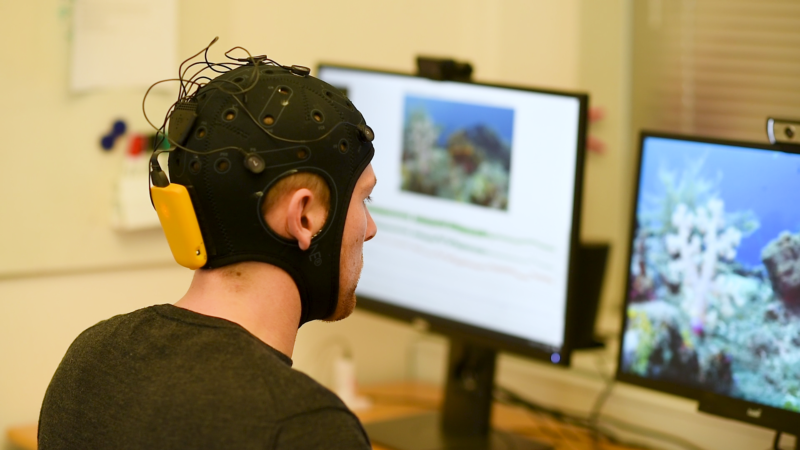About EEG/EMG
Electrical activity of the brain
The brain consists of billions of cells, half of which are neurons, half of which help and facilitate the activity of neurons. These neurons are densely interconnected via synapses, which act as gateways of inhibitory or excitatory activity.
Any synaptic activity generates a subtle electrical impulse referred to as a postsynaptic potential. Of course, the burst of a single neuron is difficult to reliably detect without direct contact with it. However, whenever thousands of neurons fire in sync, they generate an electrical field which is strong enough to spread through tissue, bone, and skull. Eventually, it can be measured on the head surface.
Think of this as a constant rumble of subtle earthquakes. Taken by itself, each burst might be too small to notice, but if several of them occur at the same time, in the same location, and in the same rhythm, they all add up to a mega-quake that will be noticeable even hundreds of miles away.

An electroencephalogram (EEG) is a noninvasive test that records electrical patterns in your brain. The test is used to help diagnose conditions such as seizures, epilepsy, head injuries, dizziness, headaches, brain tumors and sleeping problems. It can also be used to confirm brain death.